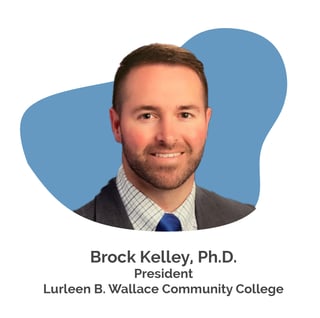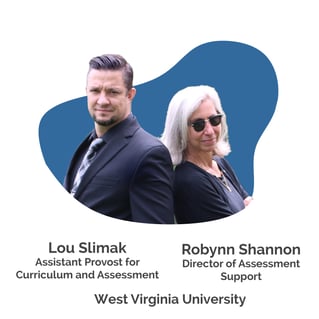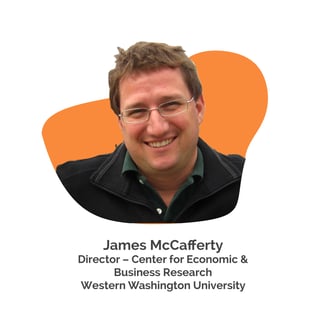Being an educator will never be easy. But JobsEQ by Chmura can make it easier. And if you subscribe to JobsEQ, you haven’t just purchased a software tool. You’ve joined a community of people who believe in using the best labor market data to help their organizations win.
We’ll learn from that community today. In this blog, we share how four of our clients in community colleges and 4-year universities have used JobsEQ to apply for (and win!) state and federal grants, prove the value of new and current programs, and set fair wages for their community college professors.
Story #1: Using JobsEQ to Win State and Federal Grants
 Brock Kelley, Ph.D, is the President of Lurleen B. Wallace Community College. Recently, Kelley and his team used labor market information in JobsEQ by Chmura to prove that Lurleen B. Wallace Community College’s Forestry program gives graduates the skills they need to get jobs in the local communities. By establishing the value of this program, LBW put the Forestry program on Alabama’s “Eligible Training Provider List,” which allowed individuals to access state and federal funding to enroll in the program for free.
Brock Kelley, Ph.D, is the President of Lurleen B. Wallace Community College. Recently, Kelley and his team used labor market information in JobsEQ by Chmura to prove that Lurleen B. Wallace Community College’s Forestry program gives graduates the skills they need to get jobs in the local communities. By establishing the value of this program, LBW put the Forestry program on Alabama’s “Eligible Training Provider List,” which allowed individuals to access state and federal funding to enroll in the program for free.
“Without labor market data, we wouldn’t have been able to prove that it was worthwhile to make the program free,” says Kelley.
Kelley’s team also used JobsEQ’s labor market data to set up an articulation agreement with a four-year university’s program of Forestry and Wildlife Management, allowing LBW students to receive dual enrollment credit for the Forestry program and easily transfer to a four-year university after two years.
“If you look at the job of Forestry Technician, which is the occupation that links directly to the Forestry program, you’ll see that there are only 8 jobs in the entire state of Alabama for ‘Forestry Technician.’ But if you look at the skills we teach in the Forestry program, you’ll see that our Forestry graduates have the aptitude to do thousands of jobs in Alabama. By looking at location quotient, [1] you can further see that a lot of those jobs are concentrated right in our local vicinity.”
Your takeaway: you can prove a program’s value—and even get funding for it—by digging deep into the skills that a program teaches, and see how those skills apply to local jobs.
Story #2: Using JobsEQ for Program Review
 Our client: West Virginia University
Our client: West Virginia University
Robynn Shannon, Director of Assessment Support at West Virginia University, uses labor market information within JobsEQ by Chmura to show demand for new academic programs that have been proposed. To analyze demand, Shannon pulls an Education Report on the program in question, and sometimes Occupation Reports and some individual analytics as well, to see whether the new program will train students for high-wage, high-demand jobs. In the future, West Virginia University plans to encourage existing academic programs to improve and change based on JobsEQ’s LMI, including what skills regional employers want and whether there is job demand for those program graduates. They also hope to be able to use it as an advising tool in the future, providing information from JobsEQ directly to students.
“Being able to connect CIP, SOC, and NAICS codes easily is particularly valuable for us, whether looking at academic programs or advising individual students,” says Shannon. "We look forward to using JobsEQ in an even bigger and broader way in the future."
Your takeaway: JobsEQ helps you prove that there is job demand for your academic programs.
Story #3: Are Community College Instructors Underpaid? Using Wage Data in JobsEQ
 Our client: Western Washington University
Our client: Western Washington University
James McCafferty serves as the Director of the Center for Economic and Business Research at Western Washington University. And he loves using data to help educators and students.
Recently, James and his team completed a study for Washington State’s Community College Systems on whether Community College instructors are paid appropriately. Their study included 25 peer states and used cost-of-living data in JobsEQ by Chmura to break down what salaries would be appropriate within states. For example, the cost of living is 60% lower in Yakima than in Seattle. Throughout this project, they used survey data, JobsEQ labor data, GIS data, plus other public data sources. They discovered that many instructors had been underpaid for years. James also appreciates the “Alternative COVID Forecast” within JobsEQ to see how the pandemic is impacting specific occupations.
For James, JobsEQ is crucial for his job. “I hate going to the BLS to find data. I can do it, but it takes forever. It’s nice having it all in one place, pulling reports, and being able to pick and choose information,” he says.
Your takeaway: JobsEQ merges well with GIS data and other sources to show a complete picture of your local labor market.
Story #4: Identifying Skill Gaps with JobsEQ
 Our client: Maine Community College System
Our client: Maine Community College System
To learn how Maine Community College System uses JobsEQ, we turn to Charlie Collins, the Deputy Executive Director of Workforce Training.
“JobsEQ is my go-to tool when I’m asked for specific labor market information to support a grant application,” says Collins. Recently, he used JobsEQ data and analysis to apply for a multi-million dollar grant from the Harold Alfond Foundation to support Maine’s top institutions, as well as a federal grant on Remote Workers. “We really rely on JobsEQ to tell us where we have skill or occupation gaps in Maine,” explains Collins. Collins and his team are seen as the go-to team for labor market information in the state system; often putting together data-driven testimony for the state government on why the Maine Community College System needs funding for a bond issue.
“My colleagues are always asking: how did you get the information so fast?” Collins adds.
Your takeaway: JobsEQ can help you access labor market information quickly and efficiently.
The Bottom Line
To design education programs that work, win federal and state grants, and make yourself a resource to your colleagues, you need labor market information and experience. Fortunately, the Chmura team and the community of JobsEQ users have both!
Contact us if you have a success story you’d like to share, or if you want to learn how to use JobsEQ to help your institution and your students. Chmura is here to be your guide to labor market information.
[1] Location quotients compare the concentration of an industry within a specific area to the concentration of that industry nationwide. For example, if breweries consist of 1.15% of your region’s employment, but breweries comprise 1% of national employment, your region’s LQ for breweries is 1.15. Also see https://www.bls.gov/cew/about-data/location-quotients-explained.htm.